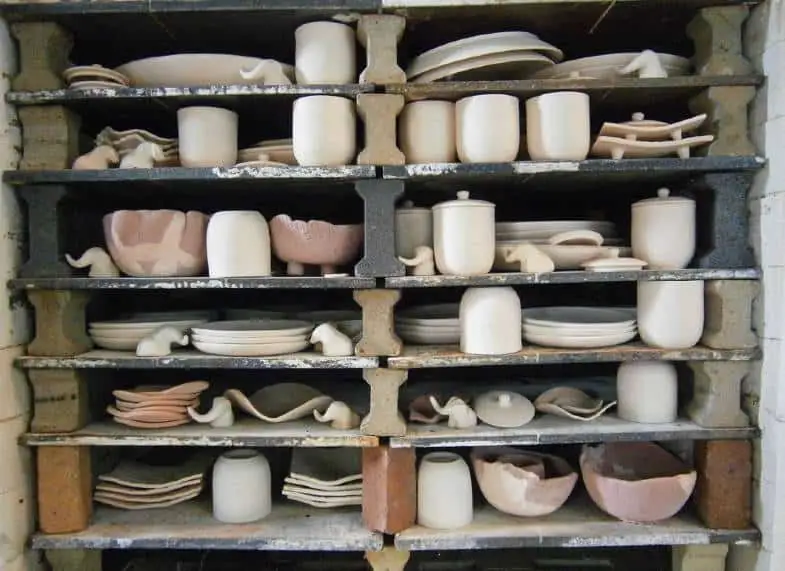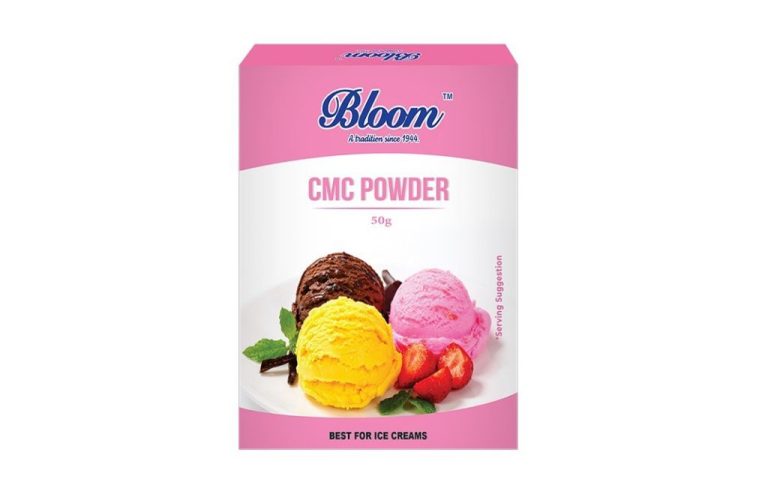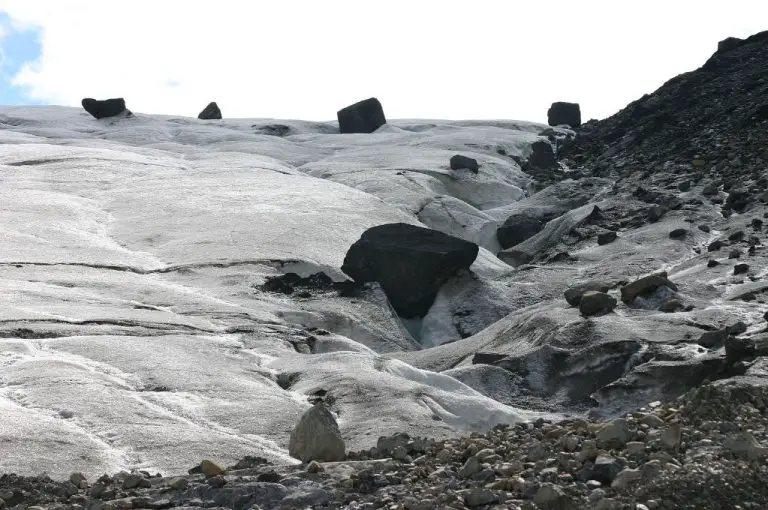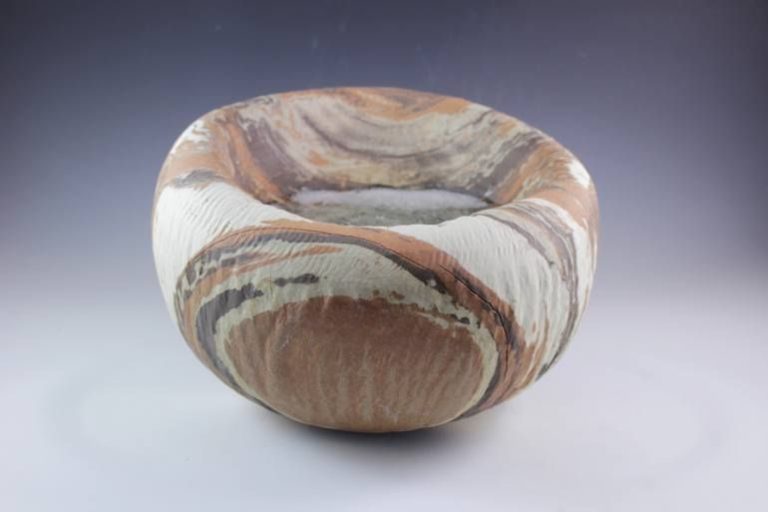What Clay Can I Use To Make Plates?
There are several types of clay that can be used to make plates, bowls and other dinnerware. The most common options include stoneware, porcelain, earthenware and terracotta clays. Each type of clay has different properties that affect the look, feel and durability of finished ware.
When choosing clay for making plates, it’s important to consider factors like firing temperature, texture, color and absorbency. For example, porcelain clays require very high kiln temperatures but produce delicate, bright white pieces. Stoneware fires at lower temperatures and results in natural earth tones and a sturdy, less porous body. Earthenware is the most versatile option, firing at moderate temperatures, but may be more prone to chipping if unglazed.
This overview will discuss the distinguishing features of the most popular clays for making ceramic plates and help identify the best choice based on your project goals and kiln capabilities.
Stoneware Clay
Stoneware clay is a popular choice for creating tableware such as plates, mugs, and bowls. According to What is Stoneware?, stoneware is a strong, hard, and nonporous type of clay that becomes vitrified when fired at high temperatures between 2,200°F and 2,400°F. The high firing temperature causes the clay to become impervious to water and very durable.
Some key properties of stoneware clay include:

- It has low porosity and absorbs very little water, making it a good choice for items coming in contact with liquids like plates and mugs.
- It has high strength and hardness, allowing it to withstand impacts and frequent use.
- It maintains its shape during firing so the final product has crisp edges and details.
- It can be decorated using colored glazes that fuse to the clay body during firing.
Due to these characteristics, stoneware is popular for tableware, cookware, art pottery, and architectural decorative elements. Its durability and water resistance also make it suitable for outdoor use.
Porcelain Clay
Porcelain clay is known for its strength, translucence and whiteness. It is made from kaolin clay and is fired at very high temperatures ranging from 1,200 to 1,400°C. According to Soul Ceramics, porcelain clay has a high level of mechanical resistance, low porosity and high density. This makes it ideal for creating durable items like plates, cups and vases.
Porcelain clay is less porous than other clays, resulting in a smooth surface that is impervious to water. Its lack of pores also makes it resistant to staining. Porcelain can be used to create thin, lightweight pieces with crisp details. When fired, porcelain becomes vitrified, meaning the clay particles fuse together. This results in a non-porous, glass-like surface.
Some key properties of porcelain clay according to Costa Verde are its hardness, whiteness and translucency. It has high plasticity and elasticity which allows throwing thin-walled pieces on the potter’s wheel. Porcelain also withstands thermal shock well, so it won’t crack during sudden temperature changes.
Earthenware Clay
Earthenware is a porous clay that is fired between 1000°F and 1150°F. It is generally very soft and brittle compared to stoneware clays (Source: https://www.soulceramics.com/pages/earthenware-stoneware-clay-difference).
Due to its porous nature, earthenware absorbs water easily, which means it needs to be glazed to make it watertight. The porosity also makes it less durable and prone to chipping or cracking compared to stoneware (Source: https://nomliving.com/blogs/thingswedo/pottery-and-ceramics-a-brief-explanation).
Earthenware has a coarse texture and can be used for hand-building techniques like coil building and slab construction. It is also commonly used for sculpting and throwing on the wheel. However, pieces may be more delicate and require extra care (Source: https://seattlepotterysupply.com/pages/the-types-of-pottery-clay-and-what-they-are-used-for).
Overall, earthenware is a versatile, beginner-friendly clay, but may not be the best choice for functional ware that needs to be durable and watertight.
Terracotta Clay
Terracotta clay is an ancient form of clay that has been used for centuries to create pottery, sculptures, and other decorative items. It gets its name from the Italian word “terra cotta” which literally means “baked earth.” Some key properties of terracotta clay include:
Terracotta clay consists mainly of iron-rich clays which gives it a distinct red-orange color when fired. The clay contains a high amount of iron oxide which causes it to turn reddish brown when exposed to high temperatures in a kiln. This unique firing process is what gives terracotta its signature earthy look and texture.1
Terracotta has a relatively low heat resistance compared to other clays, typically firing between 930-1050°C. The maximum firing temperature affects the clay’s porosity and strength. Terracotta becomes more porous and permeable the lower it’s fired, while higher temperatures make it denser and less porous.
It has high molding capabilities which allows artisans to hand-sculpt intricate designs. Its malleable texture makes it easy to shape, carve, and etch patterns by hand.2
Terracotta has low durability and becomes brittle after firing and cooling. Unglazed terracotta absorbs moisture easily and can disintegrate faster than other clays when exposed to weather and water over time.
It has a dusty orange-red color when unglazed. Applying ceramic glazes offers a wide range of finishes in different colors and textures.
Ball Clay
Ball clay is a key ingredient in making ceramic plates and other whiteware due to its high plasticity and strength when fired. It has unique properties that make it well-suited for use in ceramics manufacturing.
Some key properties of ball clay include:
- High plasticity – Ball clay is extremely pliable and flexible when wet, which allows it to be shaped and molded easily. This plasticity is critical when making ceramic ware.
- Good dry strength – While very plastic when wet, ball clay becomes very strong when dried and fired. This provides finished ceramic pieces with durability.
- Light firing color – Ball clays fire to a light cream or off-white color in the kiln up to 2000°F. This makes them ideal for whiteware where a light color is desirable.
- High ‘green strength’ – Green strength refers to the strength of unfired clay. Ball clay has high green strength compared to other clays, reducing cracking and breakage.
- Low shrinkage – Ball clays shrink only about 8% from the wet state to fired state. This minimizes warping and cracking during firing.
- Reinforces tensile strength – Adding ball clay to stoneware and porcelain bodies reinforces tensile strength to reduce breakage and cracks.
These properties make ball clay an essential ingredient in clay bodies formulated for plates, cups, bowls and other ceramic items where plasticity, light color, and high fired strength are required. Its natural properties impart qualities that would be difficult to achieve using other clays alone (https://www.imerys.com/product-ranges/ball-clay-ceramics).
Fire Clay
Fire clay is a type of refractory clay that can withstand very high temperatures. Fire clay is highly heat resistant and has a high alumina content. Some properties of fire clay include:
Resistance to high temperatures – Fire clay has a very high fusion point, usually between 1,500°C and 1,700°C, allowing it to withstand extremely high kiln temperatures without becoming deformed. This makes it suitable for applications like kiln shelves, kiln furniture, and refractory linings.[1]
Good thermal insulation – Fire clays have low thermal conductivity, meaning they resist the transfer of heat. This helps make them effective insulators in high temperature applications.[2]
High alumina content – Fire clays typically contain 35-60% alumina (Al2O3). The alumina gives fire clay its high fusion point and heat resistance.[3]
Low impurities – Good quality fire clays have fewer impurities like alkalis, iron oxide, and lime. Impurities can negatively impact the fusion point, so minimizing them improves the heat resistance.
Good plasticity – Fire clays maintain their plasticity and workability at different moisture contents, allowing the clay to be shaped or molded before firing.
Choosing the Right Clay
When selecting clay for making plates, there are several key factors to consider:
Stoneware clay is an excellent choice as it can be used to make plates of any size and holds up well to frequent use. Stoneware fires to a strong, watertight ceramic so plates made from it are durable and functional. It also comes in a wide range of colors and textures.
The clay’s firing temperature is another important consideration. Low fire clays like earthenware fire at lower temperatures but tend to be more porous. Mid-range stoneware clays strike a good balance between durability and ease of firing. High-fire porcelain clays result in very strong plates but require higher kiln temperatures.
The clay’s plasticity, or how easily it can be shaped and molded, is also key for throwing functional plates on the potter’s wheel. Smooth, plastic clays are easiest to center and shape into plates. Very sticky or coarse clays can pose challenges.
It’s a good idea to test out a few different clays to find the one with the right properties for your specific needs. Experienced potters recommend buying small test amounts first before purchasing larger quantities.
Working with Clay
When working with clay to make plates, there are some important tips to keep in mind for best results:
Prepare the clay by wedging it to remove air bubbles and create an even consistency. Knead and press the clay firmly on a flat surface.1 This helps prevent cracking and weak spots when shaping the plate.
Use plastic wrap or a rolling pin to roll out the clay into a flat, even sheet at the desired thickness. For plates, aim for 1⁄4-1⁄2 inch thickness. Dust the surface with cornstarch if it sticks.
Cut out circular shapes from the clay sheet using a template or freehand with a knife. Use smooth, fluid motions and keep the knife perpendicular to the surface.
Smooth the edges by rubbing with a finger dipped in water or using clay tools. Create decorative patterns, textures, or rim shapes as desired.
Allow the shaped plates to firm up slightly before handling. Use care when moving them.
Let the finished pieces air dry fully before firing. Handle with care to avoid dents or deformation.
Firing and Glazing
Properly firing and glazing clay plates is crucial to make them functional and give them an attractive finish. Plates should be fired according to the specifications of the clay type used. For example, stoneware clay requires higher firing temperatures around 2,200°F while earthenware can be fired at lower temps around 1,800-2,000°F. Most clays undergo multiple firings – a bisque fire without glaze to harden and a final glaze firing.
When glazing plates, it’s important to use food-safe glazes that don’t contain lead or other toxic materials. A clear glaze is a good option for functional plates. Colorful glazes can also be used but should be tested to ensure they are non-toxic. Glazes should be applied evenly in a thin coat. Plates can be dipped, sprayed, or brushed with glaze.
To fire multiple glazed plates at once, plates can be carefully stacked and spaced in a large kiln. Kiln shelves or stilts should be used to separate stacked plates and allow airflow. It’s best to fire plates in multiple smaller batches if possible. Firing schedules may need to be adjusted for more plates. Cool plates gradually after firing.
With proper clay, glazes, and firing, beautiful handmade plates can be created in home studios. Testing materials first is key to achieving the right results. Useful resources include:



